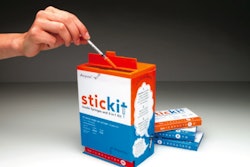
For most professionals it’s straightforward, but for packaging professionals, the scope of our role may serve as a surprise to many. Though professionals in other functions in a matrix organization might be able to say, “That’s not my job,” in general, that phrase doesn’t apply to a packaging professional.
Why is this? From my experience, the packaging function intermingles with nearly every other function within an organization, and it provides a unique vantage point to the variety of initiatives and interests across the business. Given this, regardless of the task at hand or your level within the organization, understanding how each function operates is part of your job.
When thinking about it more deeply, what do we do as packaging professionals? What is it that we should be most concerned about within an organization? Is it the material selection or packaging structure evaluation, or how and where the product will be marketed, or from where the packaging materials are sourced, or what type of machinery or manufacturing plant your package will use, or the distribution and storage method, or the legal requirements, or financial implications, or how to innovate? In general, all these activities should concern a packaging professional. Understanding this is crucial.
During my career, I’ve been fortunate to have the opportunity to work in various roles, working for companies ranging from $20 million to $14 billion in revenue, with regional to global presence. Beyond the roles of a packaging professional mentioned earlier, I want to share from my experiences two overarching, non-technical, less commonly thought-about focus areas. These apply regardless of company size, and packaging professionals can work on them as professional development to make themselves more effective within their organization.
Networking
It’s not what you know, it’s who you know. Most of us have heard this phrase. Have you ever thought about the truth in it? At every company I’ve worked for, I’ve found that networking is key to being effective. Internal networking allows you to gain a better understanding of an organization, which in turn allows you to navigate efficiently through that organization. Networking also aids in building alliances and understanding fluctuating business initiatives, and it gives other functions insight into how you can help impact the business. At times, I’ve found the packaging group is the glue that holds together siloed functions. To be an effective glue, you need strong personal and professional relationships. It’s important to note that networking has no shelf life. It requires continued internal and external work throughout your career.
Emotional intelligence
Emotional intelligence (EI) is not just a buzzword. One reference defines EI as the capability of individuals to recognize their own emotions and those of others, use emotional information to guide thinking and behavior, and manage and/or adjust emotions to adapt to environments or achieve one’s goal(s). Why is this especially important to a packaging professional? As mentioned previously, we’re in constant cross-functional contact in our organizations. Many functions within an organization are isolated and don’t need to exert high EI. The packaging professional isn’t one of them.
The way you approach someone in a meeting at your corporate office will be very different than someone you’re working with on a trial at one of your production facilities. Relationships between various functions will differ, so being nimble is a necessity. When thinking about the motivations of employees at your manufacturing facility versus those at your corporate office, it’s important to understand they may be conflicting. For example, manufacturing is focused on hitting production numbers while product development is creating “the next best thing,” which may hinder plant efficiencies. Your ability to recognize conflicting interests will help align and drive initiatives forward. The ability to understand the appropriate approach to a situation in variable settings is learned and developed over time. The first step is to recognize that EI and strong situational awareness are critical components in a packaging professional’s toolbox.
Though it’s important for a packaging professional to be technically savvy, it’s also important to understand that technical ability is only one part of the equation for professional success. When dealing with different environments and people, the soft skills you exhibit are often as important as the technical attributes—the combination of skills creates the total package. Use these skills and your unique organizational vantage point to show how you can impact your business in a positive way.
























